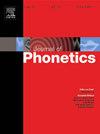This article presents three studies testing the potential role of word-specific acoustic details in perception, based on how several factors impact listeners’ accuracy in identifying homophones. Experiment 1 tests how prior exposure to particular homophones said by the same talker impacts identifications; listeners could discriminate between homophone mates with above chance accuracy after exposure to disambiguated tokens of these words produced by the talker, but not when prior exposure did not include the test words. Experiment 2 tests whether having the same talker in exposure and testing is crucial; accuracy is above chance even when the prior exposure to the homophone mates was from a different talker. Experiment 3 tests whether accuracy in homophone identification might be driven by broad associations between meaning and acoustic form rather than the details of particular words; there is no difference between exposure to the particular homophone mates and exposure to semantically similar words. Just having strong positive or negative emotional valence seems to result in higher accuracy for how homophone mates are identified. These results suggest that listeners can make use of semantically-driven acoustic differences between homophone mates when recent exposure makes these details salient or when the form-meaning associations are already strong. This link to acoustic details can be explained via associations with broad aspects of meaning, rather than depending on word-specific phonetic representations.


